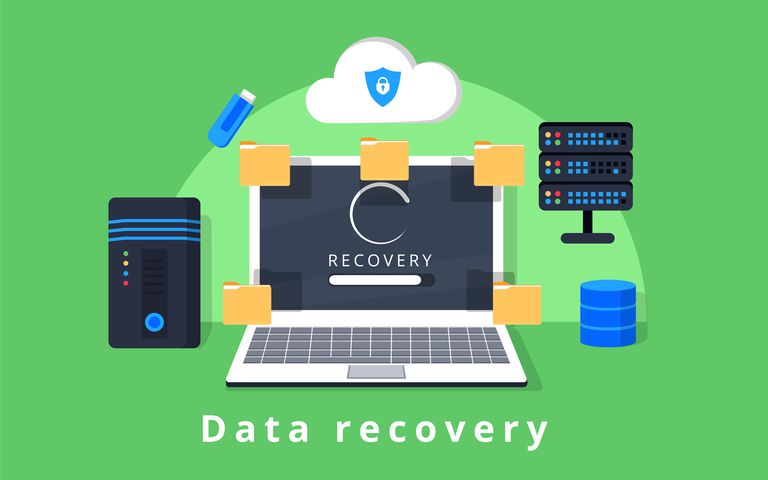Though the variety of hardware and software choices used to store digital information is expanding at a steady rate, unfortunately, technological advancement hasn’t made them entirely foolproof and resilient to unexpected mishaps. Sure, the risks get significantly reduced by means of regular backups, but sometimes even a well-laid strategy may fail to protect valuable files from falling victim to a data catastrophe. Thankfully, even in such an ill-fated scenario, one can still rescue the data if armed with a decent software tool.
How is data recovery possible?
Most conventional storage processes do not wipe deleted or lost files altogether, but simply leave the space occupied by them for “the rainy day” when it will be needed to place new data. Until the information gets overwritten, data recovery utilities are ready to lend a helping hand: they find the segments of files, which may be scattered around the disk, put them together and reconstruct the lost files for further copying. Yet, not all of them prove to be equally effective. The most basic type is free data recovery software – it’s a good place to start, as such programs may work in case of accidental deletion of several files from a USB flash drive or a Windows PC, but they may not bring the desired results if the logical structure of a storage has been corrupted, the data has been encrypted or stored in some specific way determined by the particular storage technology. This is where more advanced professional-level tools, like UFS Explorer, come into play, which bring additional techniques, features and options that may lack in their free alternatives but appear to be decisive for the success of the procedure.
What is UFS Explorer?
UFS Explorer can justly be called a step further in logical data recovery – this software uses the latest innovations and employs cutting-edge algorithms to examine your internal or external disk, USB flash drive, memory card, RAID, RAID-based NAS or any other storage device, and give the best possible chance of success under almost any data loss conditions. The product itself is represented by several editions: Standard, RAID, Network RAID and Professional, each of which has three installation options – for Microsoft Windows, for macOS and for Linux. It is worth emphasizing that the applications, though vary in terms of supported technologies and additional tools, share the equally high quality of the result and do not impose any restrictions on the amount of recovered data which can be saved.
What makes this software unique?
UFS Explorer offers an exceptional combination of data recovery capabilities, advanced features and highly adjustable data recovery procedure:
Capabilities
The software immediately detects the connected storage devices and presents them together with all the properties one can think of. Some kinds of storages, like RAID, possess special icons for easier identification. Logical volumes are displayed right under their corresponding drives with complete information about them, which inter alia includes the availability of extra storage technologies, like, for example, encryption, the type of the applied file system and its state. The user can open its content straight away, and if it is intact, extract the needed files without running a storage scan. If the volume has been severely damaged, its file system was lost or destroyed by the formatting operation, special techniques offered by the software allow reconstructing it automatically using metadata or manually specifying the storage range to be inspected by the utility.
Features
– Broad file system coverage
UFS Explorer recognizes and works with an impressive number of file systems, among which are ones of Windows, Linux and macOS. The supported set includes not only common types but also more rarely used formats, like Apple APFS, Linux Btrfs, XFS, UFS, JFS, ZFS and even Microsoft ReFS/ReFS3 and NTFS volumes with activated data deduplication. This enables the software to handle almost any storage, from a plain USB stick to a sophisticated server machine.
– Support of a wide variety of storage technologies
UFS Explorer automatically recognizes RAID parameters and restores arrays of any complexity. Manual RAID assembly is also possible via a handy RAID builder with an integral script handler. Moreover, the software lets one work with a whole range of peculiar storage technologies used in different devices and OS environments: Fusion Drive and Core Storage of Apple, Dynamic Disks and Storage Spaces of Windows, simple and thinly-provisioned LVM of Linux, Beyond RAID of Drobo NAS, Hybrid RAID of Synology NAS and RAID-Z of ZFS. Furthermore, the embedded decryption techniques for various technologies, including LUKS, BitLocker, APFS encryption and File Vault 2, allow opening encrypted volumes right on the spot, without performing their prior decryption in the operating system. Also, data lost from virtual disks of VMware, Hyper-V, VirtualBox, QEMU, XEN and Paralles can be recovered by UFS Explorer just like from any physical device. In addition to that, UFS Explorer allows processing SCSI and SAS drives with a non-standard size of sectors (520 bytes, 524 bytes, 528 bytes, etc.), employed in certain storage systems, in the absence of specialized hardware.
– Data recovery over network
UFS Explorer offers the opportunity to work distantly with any stand-alone storage device or RAID set: one can attach a disk to a PC and recover data from it using another machine connected to the same LAN. The drives constituting RAID can be physically distributed between many computers but still be put together and processed on one PC. This may be extremely useful when your computer lacks enough free ports to host all the disks.
– Diverse means for work with damaged disks
UFS Explorer pays particular attention to defective drives. The software offers a tool for creating a complete or partial image of a failing disk and is able to recover data from it just like from the source storage. One can also connect drives a DeepSpar Disk Imager and get direct access to it via LAN without any supplementary utilities. In addition, the software supports maps of bad sectors generated by several third-party solutions, like the mentioned DeepSpar DDI, ACE Data Recovery MHZ and АСЕ Lab PC-3000. When dealing with logically damaged drives one can utilize and extensive toolkit with various instruments for easy analysis of their hexadecimal content and immediate correction of errors.
Data recovery procedure
In general, the rescue operation of your files will look as follows:
- Choose the needed storage or a logical volume and scan it for deleted or lost data with the help of the respective tool from the toolbar. At this step, you can determine which part of it will be analyzed, what types of file systems need to be found, specify encoding parameters the names of the files, decide between a quick shallow or long deep scan and even provide custom rules for some very specific file formats. The default settings can be used as well.
- Wait for the program to look for the traces of lost files: it will provide you with the information on how much of the scan it has completed and how long it took. You can pause the procedure and resume it any time, or even save the intermediate results and refer to them later.
- After the process is completed, you can explore the data discovered by the software. In most cases, files will be provided in their initial folders and preserve their original names. You can sort them by the desired criteria or employ various filters based on the size, date of last modification or presence/absence of a certain sequence of characters in the name. Files like images, videos and documents can be previewed right away.
- Tick off all the recovered items or choose only the necessary folders and files. After that, click the Save button and provide any safe local or network storage to copy them.
The bottom line
As you can see, UFS Explorer can recover practically anything from anywhere which makes hands-down number one data recovery tool. Admittedly, data recovery is not always possible due to various factors like overwriting, but with UFS Explorer the odds will certainly be in your favor.



